Two hundred dollars or less is the amount of money that most people are ready to spend on a welding hood. This is a circle of hell where old welding helmets from big brands share a room with new hoods from small sellers and manufacturers.
Place where you can probably make most for your buck.
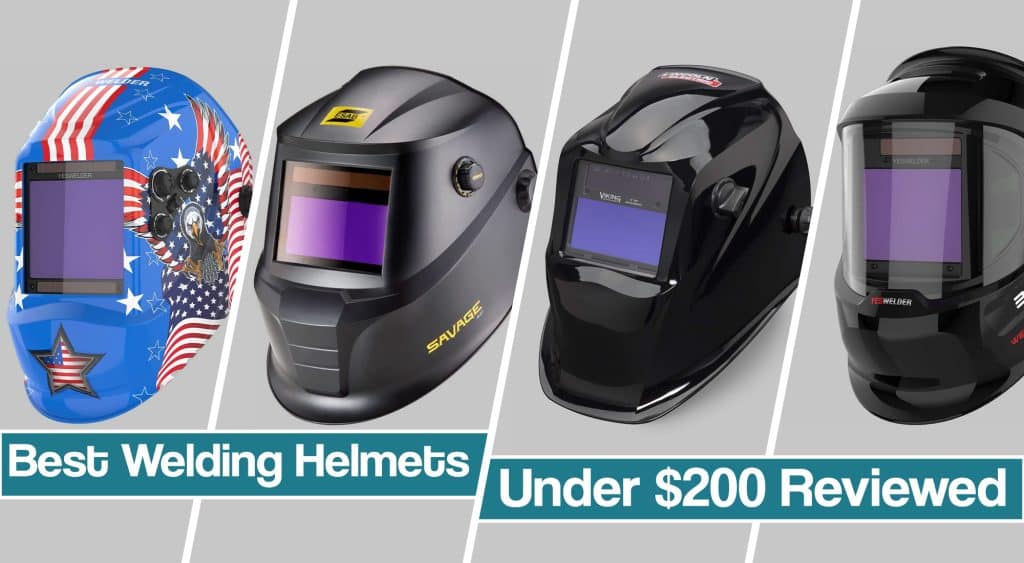
So we have prepared extensive and personal reviews of the best welding helmet under 200. Helmets that we picked and think will give you the best value for the money spend.
Best auto darkening welding helmets under 200 – comparison table
Comparison table Of Best Welding Helmets Under $200
| Image | Name | Specials | Shade Selection | Material | Viewing Area | Sensors | Check Price |
|---|---|---|---|---|---|---|---|
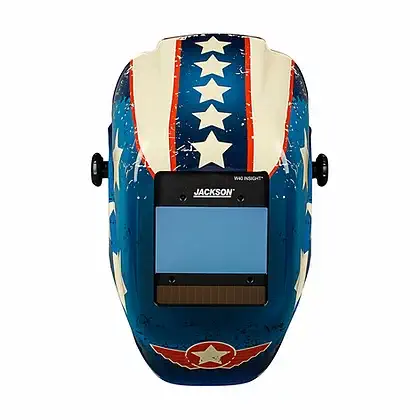 | Jackson Safety 46101 | Shade 9 - 13 | PA | 3.94" x 2.36" | 4 | Check Current Price | |
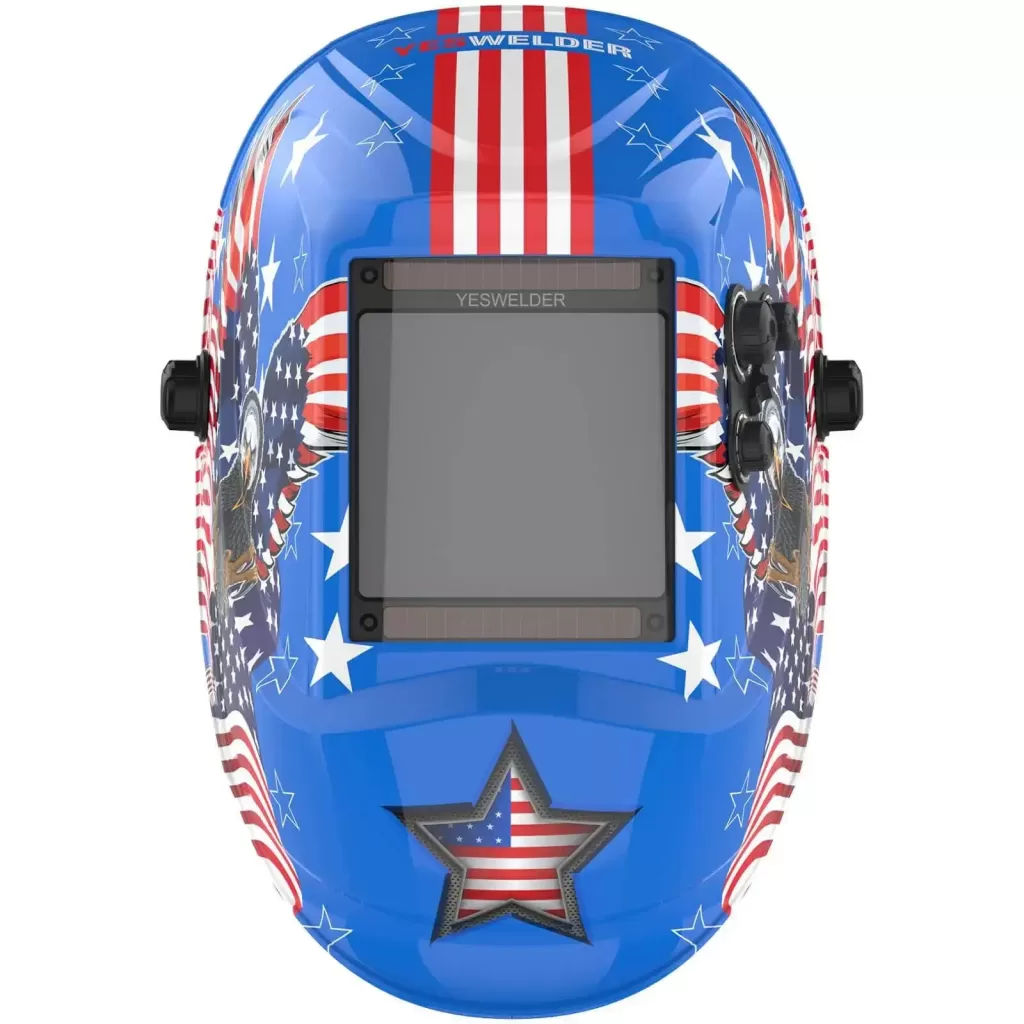 | YesWelder 091XP | Get 10% Off With Coupon: “-10% WELDPROS” | Shade 5, 9 -13 | Polyamide | 3.93 x 3.66 inch | 4 | Check Current Price |
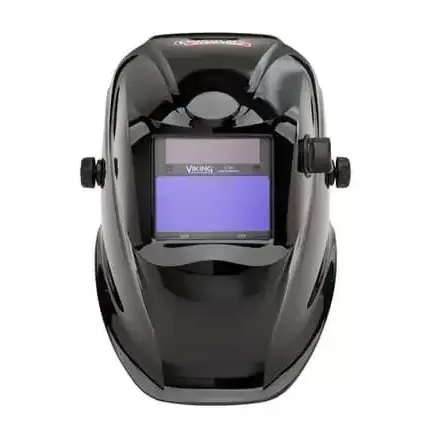 | Lincoln Electric Viking 1840 | Shades 9-13 | PA | 3.78 in x 1.85 in | 2 | Check Current Price | |
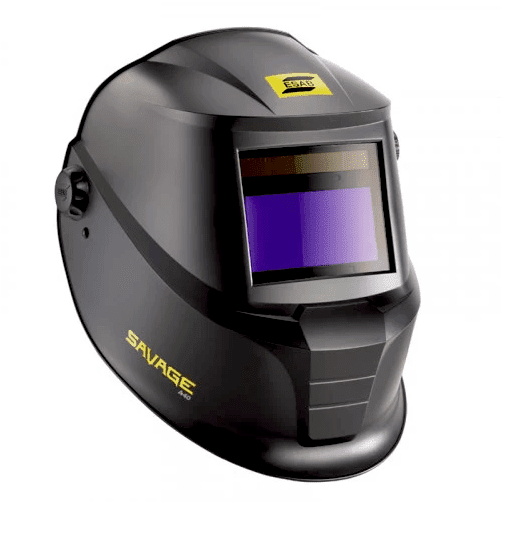 | ESAB 0700000480 Black Savage | Shades 9–13 | PA | 3.93 x 1.96 in | 4 | Check Current Price | |
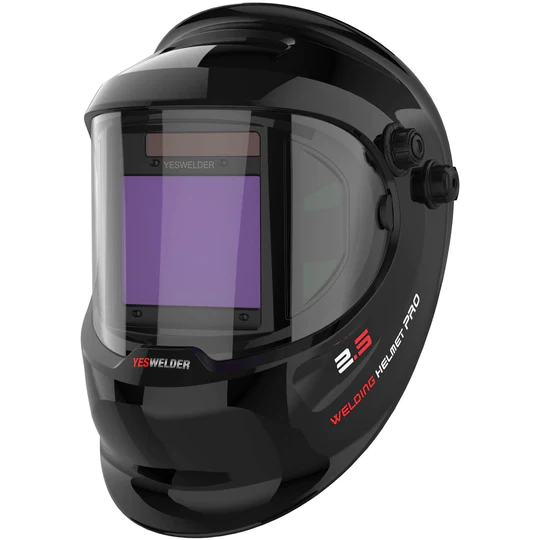 | YesWelder Q800D Panoramic View | Get 10% Off With Coupon: “-10% WELDPROS” | Shades 5-9/9-13 | PA | 3.94 x 2.64" | 3 | Check Current Price |
Best welding helmets under 200 – Reviews
1 Jackson Safety 46101- Best Value welding helmet
One of the top helmets if your budget is around 150 bucks. Considering this helmet costs around half of what top helmets these days are priced for, we can place it in the money option. I could maybe crown it a king among the best cheap welding helmets if not for some quite annoying flaws. Let’s start with some positive features first.
The most important thing that this budget welding helmet has is its auto-darkening filter lens. With 3.94 x 2.36 inch and 1/1/1/1 optical clarity and true color features is not among the biggest viewing areas.
The ADF itself is of much better quality compared to the cheap Chinese helmets. Some things are certain – it won’t get you flashed, won’t fail you randomly and it won’t turn on every other light bulb in the workshop. Shade settings go from standard 9 -13 with 4 in the “light mode” and all of that can be changed by using digital controls inside the welding helmet. This auto-darkening helmet also has two standard mods for welding and grinding.
The Grinding mode is shade 4 which is nothing special but should be expected in this price range. For the sake of comparison, TrueSight II, the second generation Jackson helmet has the “Torch” mode with its own shading settings from 5 – 8. But let’s return to this “budget” Jackson safety helmet that goes from light to dark in 1/10,000th of a second which is actually an OSHA standard for welding hoods last few years.
Jackson Safety Insight 16101 welding helmet has four arc sensors (the more sensors the merrier) of decent quality, two above ADF lens and two beneath, right before solar cell. My opinion is that any helmet above 100 USD these days should have four arc sensors and that is shod be a standard.
Powered by a combination of removable 3V lithium batters (battery no Cr2450) with solar cells that prolong welding hood’s life for many hours ( around 800 hours of battery life) Those Cr2450 coin-shaped batteries that are much lighter than AAA batteries and play a role in why this hood is considered lightweight.
Headgear! One of the best headgears on a welding helmet especially in this price range. It’s a 370 Speed Dial easy grip/turn system. I believe is design by some people I heard complaints that it pulled their hair off but I don’t know how never happened to me and then again “those” people will blame their hair loss on anything but their genes.
And now the flaws – It’s short. Yes, the Jackson Safety 46101 is a short welding helmet. It should have been at least 2 inches longer at the bottom around the neck area. Yes it’s ergonomic and easy to move your head around but it’s definitely not for overhead welding at least if you don’t glue some piece of leather down there or something to protect your neck from flying welding sparks and hot metal splatter.
Second thing is that it does not come with any replaceable clear lenses. Something, that I would expect in this price range, something that every other manufacturer does. Yes, the lenses are one of the standard sizes and can be found in any shop but still its something that you don’t expect if you don’t read the reviews and a bad surprise.
Overall this is a good welding helmet for less than 200 USD. A tool such as a welding helmet, that protects the most important in a welder – his eyes should be both from a reputable brand or at least from a brand with lots of reviews.
The most important parts are well done with quality in mind, the eye-protecting ADF filter, and the comfortable headgear, and cons can be patch up with some ingenuity and clever engineering.
Pros & Cons Summarized
Pros
- 1/1/1/1 optical clarity and True Color.
- Large viewing ara with 4 sensors
- 370 Speed Dial easy grip/turn headgear system.
- digital controls.
- Pivot shape for use in tight corners.
Cons
- Extra Replaceable lens or batteries do not come with the helmet.
- The shape of the helmet leaves the neck area unprotected.
- No outside controls
Specifications
- Dark state: Shade 9 – 13
- Light state: DIN 4
- Materials: PA
- View Area: 3.94″ x 2.36″ with equal “CUT”
- Response time: 1/10,000 Sec.
- Power supply: 3V lithium batters and solar cells
- Features: Ultra-lightweight shell, 370 Headgear,
- 1/1/1/1 optical clarity and
- True Color.
2. Lincoln Electric Viking 1840 Black – Editor’s Choice
The new version of the Viking 1840 welding helmet could not fit the “best welding helmet under 200” category only because it’s a little above that price, but it’s probably the best welding helmet on this list.
Unfotanutly various improvements did come with the improved price, but once you glaze over then new things under the hood you might consider this price optimal.
This Lincoln Electric welding helmet get you for something around 80 bucks less than Viking 3350 (the flagship model) the same:
4C LCD lens technology, 1/1/1/1 optical rating, faster switch time, and a real color filter with a blue color tint but in the old 3.78 in x 1.85 in viewing area frame.Besides Lincoln’s brand name and durability of their products include their Viking welding mask line.
Lincoln Electric’s main tramp cart is this 4C lens technology that is highly praised by professional welders, precisely because it gives you much higher visibility of the welding puddle itself and the area around it without causing much eye strain, and its huge improvement compared to the traditional lime green coloring of the ADF lens.
Improved “cut” – even shading from every angle makes this 4C model much safer for all welding positions or for welding around other welders. and much higher light to dark transition than the previous model of the auto-darkening filter from 1/10 000 sec to 1/25,000 Sec. enhance productivity and welder’s eye safety further.
Replacement front and back clear lenses are cheap and are easy to find. The helmet supports industrial 2 x 4 cheater lenses and the hard hat adapter but they are both separately.
Another feature worth mentioning on the new Viking 1840 ADF is that its sensors recognize sparks from the grinding or cutting stone. Spark sensor is a quite useful feature for many times in the workplace have had my helmet go dark on random from random flying sparks produced by the angle grinders of my colleagues or for when you forget to press the grinding button.
Speaking of the grinding button it is located on the outside, more precisely on the left side of the ADF together with the shade setting knob. It’s easy pressed even with the MIG gloves on and it’s quite an intuitive design. For example, on my Optrel helmet, the grinding and shading controls are also external but it’s quite a pain in the … to reach for it in MIG welding gloves, and on this helmet, it’s totally different story.
Shading settings have only a manual mod, nothing fancy. Lens shade goes from standard 9 to 13 which is enough for most of the welding processes the TIG amp rating is 3 – 5 Amps this puts the Viking 1840 intro a professional welding helmet basket with its much more expensive auto-darkening welding helmets. Strong delay controlling system will also protect the eyes while the welding beat is cooled.
This excellent welding helmet is solar power in combination with one CR 2450 lithium-ion battery. The manufacturer claims that the battery life is extended in comparison with the previous model, do it’s is something that I can’t yet confirm. The lithium battery is coin-shaped and extremely light which begs the question of why they didn’t put one more considering Optrel and Miller helmets use two of this kind.
Headgear is a Pivot type, also an improvement from the previous 1840 model and is comfortable and durable and what’s most important it’s easily replaceable in case you break it. The new one is around 40 bucks on the Lincolns Electric site but it could probably be found for less than that amount.
Now what I don’t like about this helmet, the number of sensors. Two independent arc sensors for this price in my opinion is not enough. They are of tested quality and are spared in a good manner to cover the full field of view but then still in 2021 and on I would prefer more arc sensors for this price.
The second is price. This is a good helmet and you will probably like it but considering that for an 80 USD more you can have double the field of view, four different arc sensors, and variable shade mode it’s a tough sell.
Now should you buy this helmet or just replace the ADF lens if you have the old-style version or on the other side add more money to the budget and get a Viking 3350, you will have to make that decision.
Pros & Cons Summarized
Pros
- 4C Lens Technology – probably the best field of view
- Much less eye strain
- 1/1/1/1 Optical Clarity
- 3.5 light state
- 3 years of warranty
- Good headgear
- 1/25,000 Sec switch time
Cons
- Price – to expensive compared to the other hoods from the list
- Manuel delay and sensitivity knobs
- Small cartridge size 3.54 in x 4.33 in
- Only 2 sensors
Specifications
- Dark state: shades 9-13
- Light state: Shade 3.5
- Materials: PA
- View Area: 3.78 in x 1.85 in (96 mm x 47 mm)
- Response time: 1/25,000 Sec.
- Power supply: 1 CR 2450 Battery with Solar Assist
- Features: 4C lens technology, True color, 2 sensors, 3 – 5 Amps TIG rating
3. ESAB 0700000480 Black Savage A40 – best cheap welding helmet
Esab A40 Savage is Esab’s answer to the current need for the mid-priced range welding helmets. This lightweight helmet has less or more the same features as Lincoln Viking 1840 and Jackson Safety 46101 for less money.
Its auto-darkening filter features the same true color technology and optical rating of 1/1/1/2 as A50 Esab Sentinel but for 3 times less money.
Shade control and grind mode button are on the outside of the welding helmet as same as its competitors, and “delay” and sensitivity control manual knobs are on the inside.
A delay that you will turn down when tacking weld or turn up when welding longer beets to give the melting pool time to cool off and sensitivity control when you are TIG welding with low amps.
Shade levels are 9 – 13 and 4 in the light state or grinding mode states as other helmets on this list. It is worth mentioning that with the introduction of true color tech the visibility has improved much and for example, viewing a welding arc in shade 12 on A30 and A40 welding helmet is a totally different and much better experience.
Esab A40 auto-darkening hood gives UV protection in all shades or in weld mode or light/griding mode as other helmets on the list and is covered under CE EN379 and EN175, ANSI, CSA, AS/NZS standards.
Esab’s A40 welding helmet uses lithium-ion batteries to be more prices it uses one CR2450 coin shape battery with the help of solar cells. The battery is replaceable and cheap but solar cells are something you should care for.
Switch time is standard 1/10 000sec and something like 0.07 ms at 73.4 F (23C) which is significantly lower than Lincoln’s 1/25 000 sec, but don’t forget the huge price difference and that 1/10 is still fine and safe.
The best thing besides the cheap price and good auto-darkening filter is the number of sensors, four different arc sensors on each side of the auto-darkening lens give much better coverage and reduce the chance for arc flash greatly.
This auto-darkening welding helmet can be used in any welding process, from manual arc welding to low amp TIG but would not recommend it in Flux Core welding where you would use extremely high amperage on thick metal plats. Sensors are not designed for it in my opinion and may suffer failure due to extreme heat.
All thins sad this is probably the best auto-darkening helmet under 140 USD and is great for students and hobbyists how are on a tight budget but need a good hood.
Pros & Cons Summarized
Pros
- True color filter
- Spare parts are widely available
- Inexpensive welding helmet
- four sensors
- Lightweight and durable helmet
- Grinding and cutting buttons are on the outside
Cons
- Optical classification of 1/1/1/2
- Missed opportunity for a cutting mode
Specifications
- Dark state: 9–13 automatic
- Light state: Shade 4
- Materials: PA
- View Area: 3.93 x 1.96 in
- Response time: 0.1-0.9 s – 0.07 ms
- Power supply: Solar cell and CR2450 lithium battery
- Features: Four sensors, lightweight
- Weight 1.1 lbs. (500 g)
4 YESWELDER With Large Viewing Screen – cheapest welding helmet with true color
Did you know that you can have an affordable welding helmet beneath 100 USD with a large 3.94″X3.66″ viewing screen, true color filter, and all the settings on the outside? Pretty much yes, you can.
Guys from Yeswelder are really trying to reach the market with their competitive prices, features, and gifts that come with the helmet.
But are these helmets really deliver on their promises? Are they up to the tasks?
Let’s start with the auto-darkening filter. Woaping size of 3.94″X3.66″ for this price sounds unbelievable but it’s true, the screen is of good quality and shading is mostly (CET) is mostly equal from all angles but if you have a chance to compare it with Lincoln’s Viking you’ll notice some shortcomings in this field.
The true color filter is good and it’s a huge improvement compared to the old green colored lens but its optical clarity is 1/1/1/2 which does give you the ability to use a much lower shading level but the clarity itself is somewhat lesser compared to the 1/1/1/1. Again, just compare Viking 3350 and you can note the difference.
Now don’t get me wrong this helmet has good visibility, miles more compared to the other cheap helmets and is suitable for most welding projects and will protect you from all the harmful light rays. This auto-darkening hood meets EN379 and ANSI Z87.1 safety and technical standards and regulations. I only would not recommend it to the top professional welders that do low amp TIG on high-stress joins.
The helmet has four different arc sensors of decent quality on each side of the auto-darkening filter. For this large ADF, four independent arc sensors are a must, if you are not in a habit of getting flashed. For power, it uses one coin-shaped replaceable battery and 2 blocks of solar cells beneath and above the ADF filter. It’s an interesting approach given that most helmets use 2 batteries and one solar block but this might be a more cost-effective option.
Also, this helmet features grinding, welding and plasma cutting mode, basically shade from 4 to 13. This is one of the pros of using 1/1/1/2 optical clarity technology and it’s a good thing they use it fully. Shade 4 is a classic light state/grinding mode with little more visibility due to a true color filter.
It can’t compare with for example Optrel’s hood in a light state of 2.0, but consider that the price is 3 times less. Cutting mode is from 5 to 9 and is a very useful feature, its much better to have a helmet on your head that will protect your whole face than just cutting or welding glasses.
This Yeswelder’s welding helmet is made in a pivot design and is very light 1 lb 6oz and for that reason, you can use it to fit tight spaces, the downside – there is no hard hat adapter for it.
The biggest downside of this welding helmet is the headgear. It’s decent when the comfort is in question but durability is its biggest problem. It’s absolutely not made for havy duty work, I how that they improve on the headgear design in the days to come. In the meantime, you can buy a Miller or Lincoln’s excellent headgears for 30 bucks and fit on this helmet.
Recommended for light welding work.
Pros & Cons Summarized
Pros
- All controls are on the outside
- Largest Large Viewing Screen with true color filter
- two solar cells and 4 sensors
- Plasma and Oxy cutting mode
- extremely cheap
Cons
- Bad headgear, not design for rugged use
- This auto-darkening welding helmet uses using 1/1/1/2 optical clarity technology
- Shading does not spread equally
Specifications
- Dark state: Shade 5 – 9 for cutting and 9 -13 for welding
- Light state: Shade 4
- Made of: Polyamide (PA) or Nylon
- View Area: 3.93 x 3.66 inch
- Response time: 1/10 000 sec in normal temperatures
- Power supply: Two solar cells & replaceable battery
- Features: True Color
5 YESWELDER Panoramic 180 View Welding Helmet – cheapest welding helmet with Side Windows
Welding helmet manufacturers have experimented with side windows and panoramic views for some time now. Usually, this novelty was reserved for flagship auto-darkening helmets from known brands and for cheap Chinese knock-offs.
Lately, this implementation can be found in good welding helmets of modest price.
This another welding helmet from Yeswelder is such. This one features 1/1/1/1 optical clarity technology intro 3 LCD screens with ADF filters.
They all should work Synchronously because they are all connected to the same four arc sensors in the front and two sensors on the side windows, in a total of 6. Screens are as big as possible at 3.94×2.64″ for the front and 1.38/2.56×2.36″ on the sides. The helmet also features true color sight tech but it still has that green hue even do visibility and homogeneity is better than with 1/1/1/2 optical tech. It also has 3 modes for plasma cutting, grinding, and welding with standard 4 shade in light mode, 5 – 9 in plasma cutting mode and classic 9 – 13 for welding.
Powered with lithium-ion batteries and one solar cell at the bottom. lithium batteries are coin-shaped standard and they might be a little week for 3 screens, they might last much less than with other helmets. This in theory should not be such a problem considering they are quite inexpensive.
Five-point headgear design is an improvement considering many people had problems with the headgear on the other Yeswelder welding helmets. They also implemented oversized sweatbands for extra comfort. Yet it still can’t be compared with the headgear featured in new Jackson and Lincoln helmets.
If the headgear breaks, you can always pick up one of those, considering how cheap this helmet is, it’s probably still within the budget.
Pros & Cons Summarized
Pros
- Side windows with their own arc sensors
- extremely cheap welding helmet
- 1/1/1/1 optical clarity with a true color filter
- Plasma cutting mode
- five-point headgear
- Compatible with cheater lenses
Cons
- Headgear is not made for professional extended use
- Only one lithium battery
Specifications
- Dark state: Shade level 5-9/9-13
- Light state: DIN 4Materials: Polyamides (nylon)
- View Area: 3.94×2.64″ Side Windows 2pcs: 1.38/2.56×2.36″
- Response time: 1/10 000 sec
- Power supply: Solar cell and Lithium Ion Battery
- Features: 3 screens and 6 sensors, true color filter, 1/1/1/1 OC
Buyer’s Guide When Buying Cheap Welding Helmets
This is the most important thing to remember when you find affordable welding helmets and other cheap helmets from less-known brands. These hoods are a white label product and like many other, are made in China. That is not the problem, all welding helmets are probably made there. Problem is that the manufacturer does not test these products before shipping them to the trader and that many times defective helmets lend in the hand of buyers.
Big brands have time and money to put in testing their welding helmets before shipping but small companies don’t. So even with all the fancy features, you can end up with a malfunctioning hood. What you should do in this case is to make sure that the seller has a return policy and you should send your welding helmet back right away and ask for a new one. They will have to honor their return policy and besides that hustle, you will get a working helmet.
Welding helmets from big brands have their patented technologies like Miller’s clear light lens technology with blue tint instead of green and x mode.
They take pride in them and will always try to be in front of the competition and so are more reliable (in most cases) and durable than their budget alternatives.
They might have a smaller viewing window on their ADF filters or a lesser number of sensors but they follow the standards more and use better components in their hoods.
So depending on what are you; professional, student, or just a hobby welder you should consider hoods that will fit your work and the budget the best.
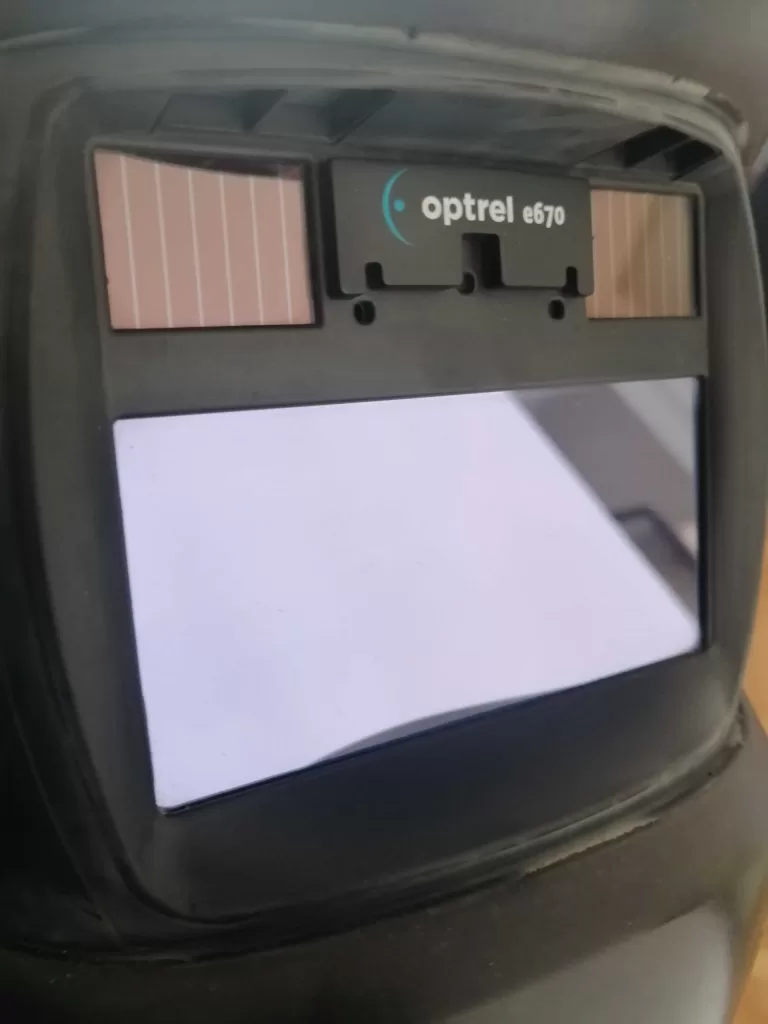
For example, if you are a full-time welder, 8 hours a day 40 hours a week and you are doing overhead welding or you are in some other more complicated parts of the welding trade you should probably get yourself a Lincoln hood or something similar from a list of best welding helmets in general
On the other side if you are a student or welding is not your primary way of money-making you can afford yourself some risk in buying welding helmets from less known brands.




